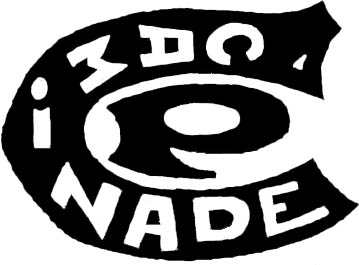

A French specialist marque from around 1910-1950, Pierre Caminade produced some very unique bikes. During the period post-1936 the marque worked perhaps exclusively in Dural (aluminum), producing frames of octagonal tubing (sold as Caminargents) fitted into elaborately cast lugs which were clamped around the tubes by means of bolts, that in some ways presaged the bonded aluminum bikes that were to arrive on the scene many decades later. Head tubes and associated lugs were cast as one piece. Forks were produced in the same manner, with the entire crown cast as one, and the blades bolted into it. From the limited number of Caminargents I have seen (in pictures - the only one I've actually seen is my own #429), all the frames appear to be the same, regardless of whether road or town bikes, with the exception of mixte frames - the differences appear to only be in the components fitted.
A more detailed history of the marque, courtesy of Ken Denny (with some slight additions by myself), is as follows:
Pierre Caminade was born near Bordeaux, south west France in the late 1879. He set up shop as a framebuilder in Bios-Colombes, an inner suburb of Paris around 1910, just before WW1, and quickly gained reputation for producing lightweight racing cycles to the Buffalo (Paris) Velodrome contingent of racers. His works at this time were exclusively of lightweight steel tubing, track-specific. After WW1, the use of aluminum, having tested with great successes in aircraft and artillery uses, assimilated into mainstream use. According to cycling historian Raymond Henry, the idea of aluminum racing cycles was not new, with Rupalley building a successful prototype in 1896 of gas-welded, lugless design, and the firm of Delage developing a short production run of lightweight, lugged and bolted aluminum frames in 1933.
But it was Caminade who successfully built a comprehensive lightweight cycle and put it into production for a period that was to last over 20 years, starting in 1936. Promoted by the Societe du Duralumin (a French trade council headquartered in Paris), the "Caminargent" cycle was launched. While available in a range of models, all frames were identical in design and execution, consisting of octagonal section, double-butted (on inner walls) Duralumin tubes with cork-filled dampening ends. The tubes were joined using very high tolerance cast aluminum lugs (quite ornate with Art Nouveau details). The lugs were fitted with opposing setscrews that allowed the main tubes to be compress-fitted and adjusted for alignment. The screws were detailed with the Caminade shield logo. Round-oval section fork blades and stays are fitted with cast fork ends, plug-in type with setscrew fasteners - a predecessor by more than half a century to the replaceable rear fork ends of todays state of the art racing cycles.The headtube is a single cast piece, integrating headtube and headlugs into one contiguous casting (ala later A. Singer).
The cycles were fitted with Caminade handlebar and stem, Caminade extruded rims, Caminade (Atom) hubs, Caminade saddle (aluminum railed predecessor to the Ideale Duralumin railed saddle) Stronglight 49D crankset, Duralumin (Lyotard) pedals.
The Randonneuse model was fitted with 3-speed Caminade derailleur, called "Le Rectiligne", which Pierre Caminade developed in 1933. Modeled after the 1904 Terrot Model H hub, Le Rectigline changed gears NOT by shifting a chain over a static cluster of gears, but by moving the gear cluster in and out while maintaining constant, straight chain line. Use with a double chain wheel and an additional pulley wheel (and accompanying hardware) resulted in "Le 6 Vitesses Caminade" - 6 speeds for the cyclotourists.
While not the pioneers, or alone in their time in the use of aluminum for frame building, their unique construction is what set them apart. Barra and other French makers also produced aluminum frames in the 1930s, though of welded construction. Monark and Hawthorne produced aluminum balloon-tire bikes in the US in the 1930s as well - the Monark Silver Kings were "lugged" (though in actuality, the "lugs" were actually cast around the tubes in a jig). The American manufacturer Lu-Min-Num (the brand name of a refridgerator and rain gutter company!) produced aluminum frames in the 1890s - and sold them on their light weight and stiffness! Some things never change...
Anyone with more info on the marque, I'd be delighted to hear from you! Among other things, I'm looking for more Caminargents (and maybe even some Caminades!) to picture on this site, more Caminade print ads, and wondering if anyone has any idea what the mounting bracket thats part of the casting for the bb lug is for - derailleur tension arm? kickstand? - it seems to be on all Caminargent frames.